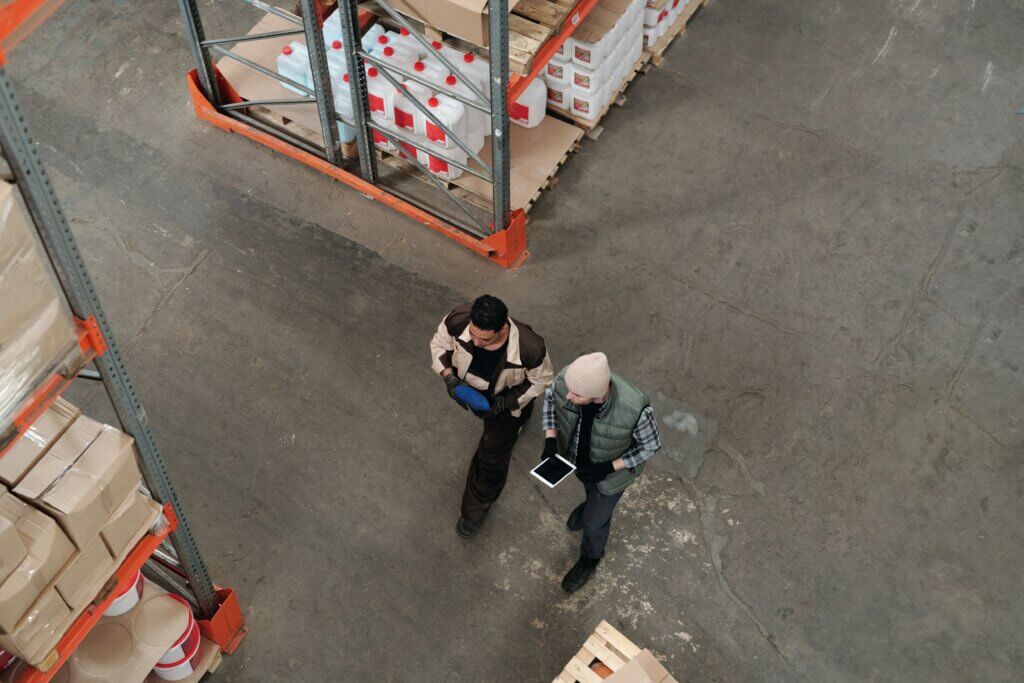Supply chain operations have always been orientated around efficiency, consistently working to improve processes, inventory management and delivering the most value at the lowest possible cost. Supply chain management encompasses many different functions that are each dependent on one another. As of more recently, the magic of digitalisation is enabling supply chains to take a more holistic approach and improve efficiencies across the board.
How to Digitise a Supply Chain

Digitalisation involves utilising a series of digital products that connect the supply chain, and this can come in many forms such as robotics, connected sensors or big data analytics.
IoT sensors can be connected across the entire supply chain, whether it’s on crates, delivery trucks or pallets inside a warehouse. Leveraging sensors can provide real-time data such as location, temperature, motion, g-force, and other important data to transform a supply chain.
For example, let’s consider the supply chain of highly valuable vaccines, it involves a specialist manufacturing process, incredibly time-sensitive logistics and of course not one single vaccine can be damaged or lost in transit or storage. The integration of IoT can enhance the supply chain to deliver real-time insight, so businesses know exactly where their product is at all times and for those sensitive goods, the sensors can even monitor temperature and humidity throughout transit so their integrity can be maintained. This year, the logistics sector had, and has, the delicate burden of distributing the Covid-19 vaccine. The Pfizer vaccine needs to be stored at sub-zero temperatures and pharma companies need to ensure vaccines are delivered to those who need them, sensors enable both trucks and containers to be monitored at all times. This can even include the condition of the package throughout its transit so that they never miss a beat.
What is There to Gain from IoT Tech?

The benefits don’t just stop there! Aside from having complete visibility of goods, digitalisation can provide lower operational costs and efficiencies throughout. According to a McKinsey report, digitalisation can lower operational costs by 30% and decrease inventories by up to 75%.
Digitalisation is able to achieve this through;
- Minimising Mileage – Having insight and data on your supply chain, businesses can start to spot inefficiencies, this includes chosen routes. As IoT sensors are tracking deliveries at all times, the most optimum routes can be chosen through analysis, avoiding unnecessary travel.
- Optimise Warehouse Space – With more accurate figures on current inventory levels, warehouse space can be more effectively assigned, and can reduce costs if less space is required.
- Predictive Maintenance – Sensors can be connected to any assets and data on their performance is consistently being monitored. Machine learning algorithms can begin to identify when an asset is operating inefficiently, which could indicate a fault. Instant alerts can be sent so that predictive maintenance can take place, reducing delays from failure and repair costs.
- Improved Production Planning – With the stream of data supplied through a connected supply chain, you can streamline planning processes and it can be automated up to 90%.
- Accurate Stock Levels – Excess inventory is often used as a buffer between supply and demand, but with IoT and AI, you are able to better predict demand and adopt a lean ‘just-in-time’ principle, minimising the need for excess inventory and if perishable, waste.
Here’s How Ocado Proved It
Many companies have already embraced IoT in their operations and warehouses. For example, British online-only Ocado has embraced automated warehouses, that can process around 3.5 million items or 65,000 orders every week. Using an AI-based algorithm it stores the items by demand forecast with frequently ordered items getting placed on the top and ones rarely bought at the bottom and the entire system runs live a hive-grid machine with automated robotics to package baskets.
If you would like to find out how IoT can revolutionise your operations, then get in touch!



